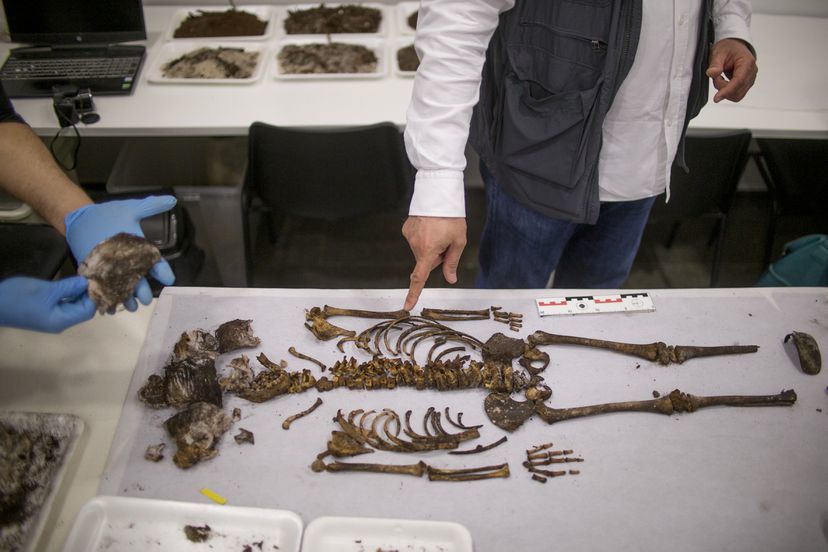Child’s Coffin Discovered at the Real Alcázar of Seville
El País reports that the remains of a child were discovered under the floor near the main altar in the chapel at the Real Alcázar of Seville, a royal palace in southern Spain. The burial was found during work to restore the palace’s sixteenth-century ceramic tiles, which were designed by artist Cristobal de Augusta.

The sarcophagus contained a disintegrating wooden coffin and a complete skeleton – the first to be found in the Real Alcázar – along with pieces of fabric, shoe leather and two mother-of-pearl buttons.
Archaeologist Miguel Ángel Tabales, who is leading the research, is in no doubt that the altar of the chapel was not the little girl’s original burial place.
He also believes she must have belonged to a very powerful family to be buried within the royal palace. His theory is that she was placed to the side of the altar when the chapel was repaved between 1930 and 1940.
“We have not found any documentation to confirm it, but the lead coffin was surrounded by a cist [stone coffin] made from reused bricks held together with cement, materials that tell us it is from the first half of the 20th century,” he says.
“My theory is that the workers found the sarcophagus in another area, opened it and, on seeing it was a corpse, decided to cover it decently and place it near the altar.”

The researchers are in the preliminary stages of examining the coffin and its contents and are still hoping to find a seal in the lead or any mark in the remains of the wood that will offer clues to the identity of the little girl, who was neatly laid out with her hair combed, as can be seen from the pieces of her skull, fractured by the weight of the marble floor.
The theory they are working on is that she lived between the end of the 13th and the end of the 14th centuries. Both the team of archaeologists and the director of the Real Alcázar, Isabel Rodríguez, along with palace warden, Román Fernández-Baca, are convinced that other corpses will emerge. “This is the tip of the iceberg,” says Tabales.
“When we saw the sarcophagus, we immediately thought that there could be more in the basement of the chapel. It could be a crypt that was part of the gothic palace, built by [King] Alfonso X, the Wise, in the second half of the 13th century over the old Almohad palace.”
Fernández-Baca, former director-general of fine arts for the Culture Ministry, believes the next step will be to put the body into context.
“We are going to make a study of the subsoil using a geo-radar to examine what physical elements we may come across and that information will be passed to the Alcázar’s executive committee who will decide how to proceed,” says the warden, who estimates that in three months they will have the results of the carbon-14 test to determine the age of the girl – jokingly dubbed the Berenguela girl (after the marble-like stone) by researcher Enriqueta Vila, who has been to view the discovery along with archaeologist and historian, Pilar León-Castro, both of whom are on the palace’s governing board.

Anthropologist Juan Manuel Guijo, who is in charge of studying the remains, hopes that the tests will provide information about the girl’s lineage, where she lived, the cause of death and the funeral rites performed at her burial. “She had her arms semi-flexed and crossed over her thorax,” notes Guijo. “And the body had not been tampered with.
We will be able to extract her DNA from the root bulb of her hair [rather than the bones] because when the wood disintegrated, the bones came into contact with the lead, which alters the results of this test.
If we find remains of oils, we will know if she was an important person and also if she had been embalmed, a ritual forbidden by the Catholic Church, but which the wealthy practised in their quest for eternal life.”
It is still not known what the girl died of, although a permanent fully formed molar has helped the anthropologist to calculate she was around five years old and fair hairs on the nape of her neck that she was blonde.
Besides the location, the fact she was buried in a lead sarcophagus – measuring 116 centimetres long and 40 centimetres wide at the head and 30 centimetres at the foot with a depth of 30 centimetres –suggests she was from a wealthy background.
Next to the bones of the little girl, six boxes containing an earthy substance have not yet been examined and may hold further surprises.
